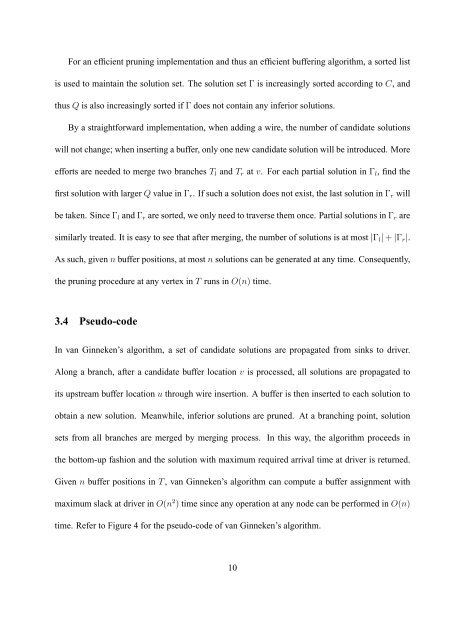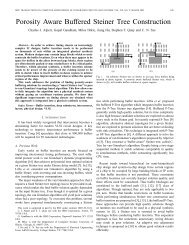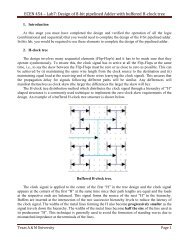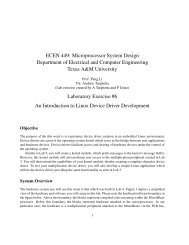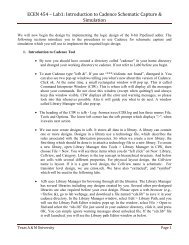Buffer Insertion Basics - Computer Engineering & Systems Group ...
Buffer Insertion Basics - Computer Engineering & Systems Group ...
Buffer Insertion Basics - Computer Engineering & Systems Group ...
You also want an ePaper? Increase the reach of your titles
YUMPU automatically turns print PDFs into web optimized ePapers that Google loves.
For an efficient pruning implementation and thus an efficient buffering algorithm, a sorted list<br />
is used to maintain the solution set. The solution set Γ is increasingly sorted according to C, and<br />
thus Q is also increasingly sorted if Γ does not contain any inferior solutions.<br />
By a straightforward implementation, when adding a wire, the number of candidate solutions<br />
will not change; when inserting a buffer, only one new candidate solution will be introduced. More<br />
efforts are needed to merge two branches T l and T r at v. For each partial solution in Γ l , find the<br />
first solution with larger Q value in Γ r . If such a solution does not exist, the last solution in Γ r will<br />
be taken. Since Γ l and Γ r are sorted, we only need to traverse them once. Partial solutions in Γ r are<br />
similarly treated. It is easy to see that after merging, the number of solutions is at most |Γ l | + |Γ r |.<br />
As such, given n buffer positions, at most n solutions can be generated at any time. Consequently,<br />
the pruning procedure at any vertex in T runs in O(n) time.<br />
3.4 Pseudo-code<br />
In van Ginneken’s algorithm, a set of candidate solutions are propagated from sinks to driver.<br />
Along a branch, after a candidate buffer location v is processed, all solutions are propagated to<br />
its upstream buffer location u through wire insertion. A buffer is then inserted to each solution to<br />
obtain a new solution. Meanwhile, inferior solutions are pruned. At a branching point, solution<br />
sets from all branches are merged by merging process. In this way, the algorithm proceeds in<br />
the bottom-up fashion and the solution with maximum required arrival time at driver is returned.<br />
Given n buffer positions in T , van Ginneken’s algorithm can compute a buffer assignment with<br />
maximum slack at driver in O(n 2 ) time since any operation at any node can be performed in O(n)<br />
time. Refer to Figure 4 for the pseudo-code of van Ginneken’s algorithm.<br />
10


